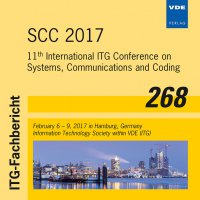Achieving Minimum Latency in Relay Assisted Interference Networks
Konferenz: SCC 2017 - 11th International ITG Conference on Systems, Communications and Coding
06.02.2017 - 09.02.2017 in Hamburg, Germany
Tagungsband: SCC 2017
Seiten: 6Sprache: EnglischTyp: PDF
Persönliche VDE-Mitglieder erhalten auf diesen Artikel 10% Rabatt
Autoren:
Gherekhloo, Soheil; Sezgin, Aydin (Institute of Digital Communication Systems, Ruhr-Universität Bochum, Germany)
Inhalt:
A partially connected K-user interference channel in which the desired links are not present and the communication is facilitated via a full-duplex relay is studied. While the transmitters and receivers are single antenna devices, the number of antennas at the relay is assumed to be significantly larger than the number of users. The latency of the communication over this channel as a function of the strength of the interference links is studied. To this end, a scheme which is based on decode-forward and linear beamforming at the relay is proposed. To show the optimality of the scheme, its given latency is compared with two genie-aided lower bounds established in this work. It turns out that as long as the interference links are weaker than the links from the relay, it is optimal to use treating interference as noise (TIN) at the receivers. In this case, it is optimal when the relay operates in full-duplex mode. Interestingly, if the interference is stronger than the relay link and the decoding strategy at the receivers is restricted to TIN, lower latency is achievable by operating the relay in half-duplex than full-duplex mode.


